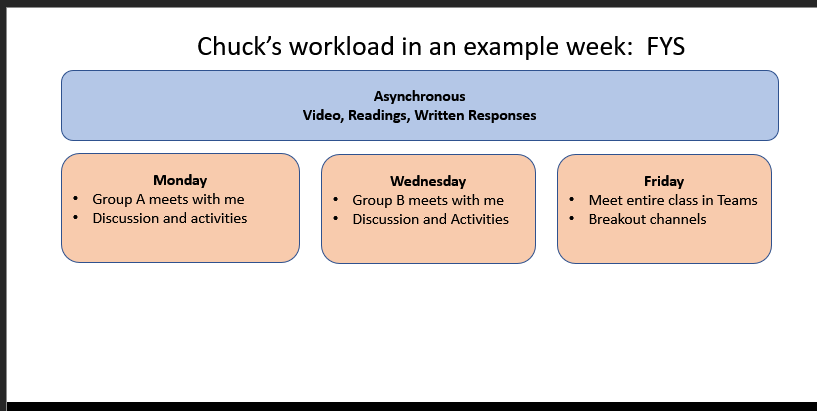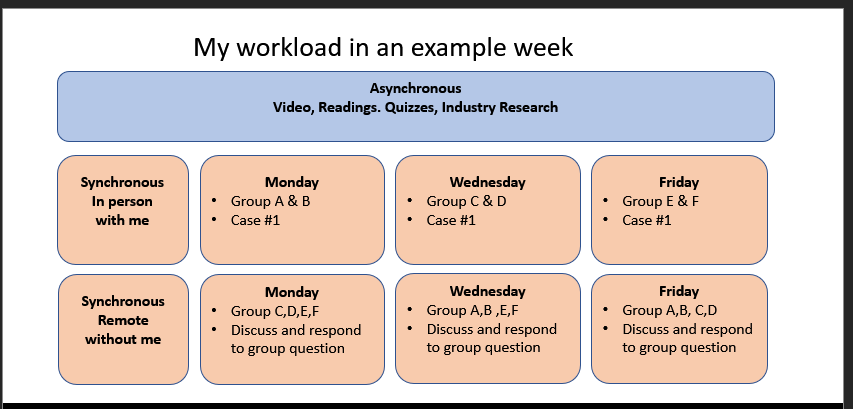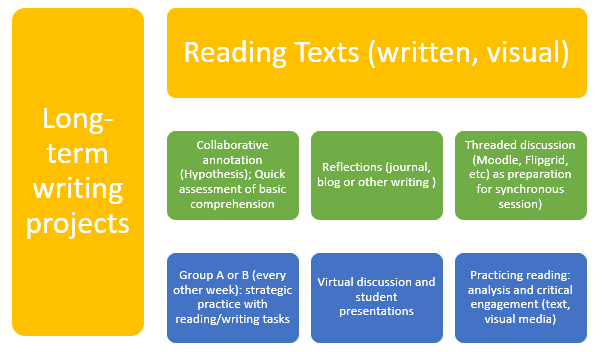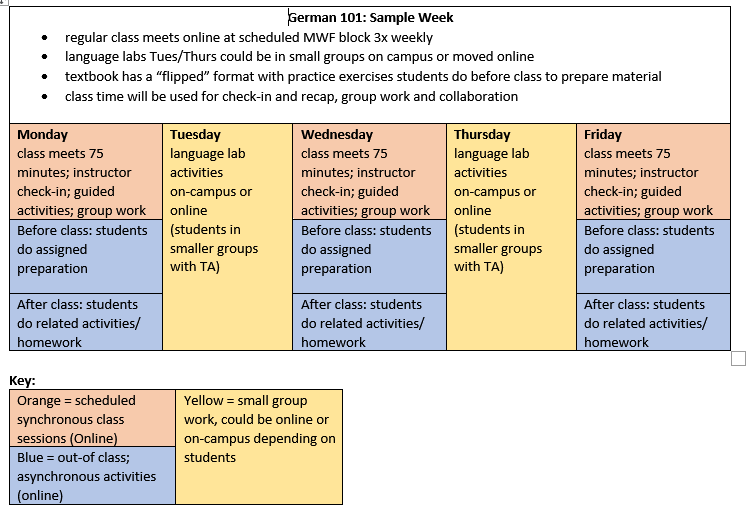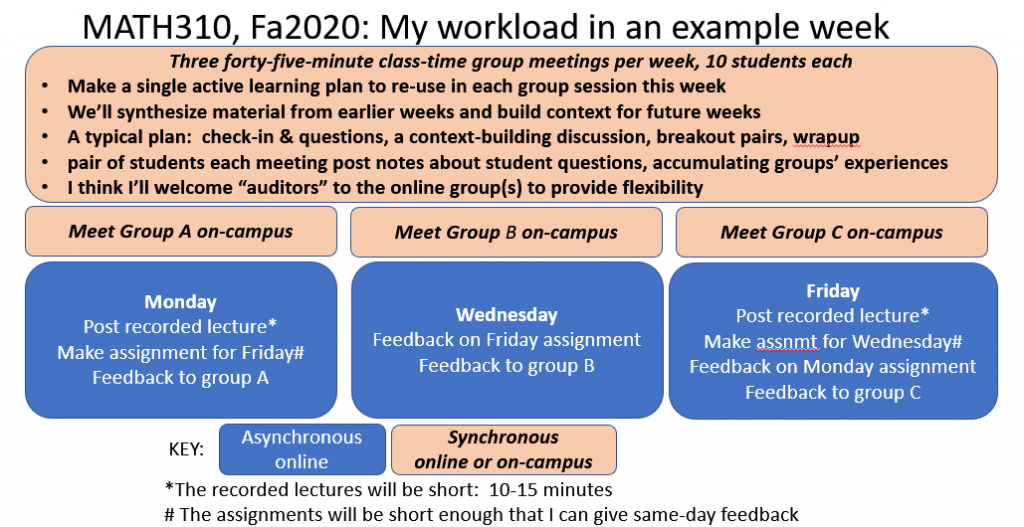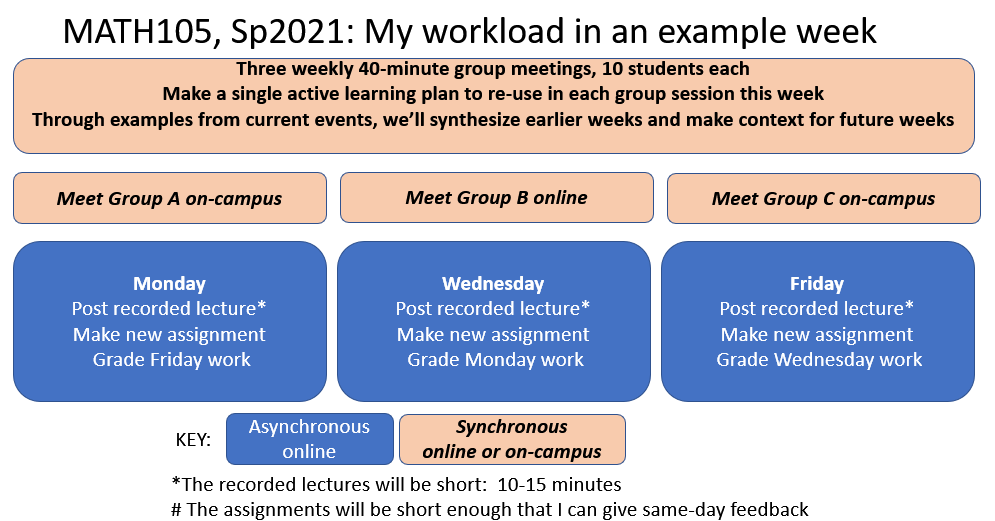Registration: 27
I’ve put together a mock-up model below that I think would work for an intro-level history class. I wanted to add as a caveat that this is not actually the model that I’ve decided to use in the fall – I’ve decided to run with an online class with synchronous discussions on Teams (that will move between small groups and the whole class) instead. This is partly because my classes depend on having students working together collaboratively, and my thought is that as long as the technology works, they’ll be able to do that more effectively online than they would be able to while sitting six feet apart and wearing masks.
As I was trying to reflect on how to build a hybrid class that incorporated both online interactions and discussions with small groups of 10 or fewer students (to meet social distancing requirements), I really struggled with the question of how to create meaningful in-person interaction without creating two versions of my course. My introductory-level history course moves chronologically and thematically over a four-hundred year period, and I had a hard time envisioning how I could divide the class into recitation sections that would cover the same material on Monday, Wednesday, and Friday and still have that material make sense to all three groups within the framework of the class. But I also had reservations about covering different material in the Monday, Wednesday, and Friday meetings, because that seemed like it would essentially amount to running an online version of the class and an in-person version of the class simultaneously. (The students that I was not meeting with on Monday, Wednesday, and Friday, would also need to be able to engage with that material, after all).
I decided that instead of seeking to cover material in person, it would make more sense to do skills-based workshops in person that students could rotate through over the course. My introductory-level history class focuses on primary source analysis; the class’ existing assignments work to scaffold primary source analysis skills over the course of the term. So I thought that designing in-person workshops that students would rotate through would contribute to my goal of building primary source analysis skills, and it wouldn’t interfere with the chronological structure of the class.
On Monday, I would meet either in person or online with a small group of students, and we would do an in-depth dive into one primary source that we’d discussed briefly the week before (that way, the students would have the historical context for the source). I’d also give them a new source to look at – something that would be more challenging or unusual – to see what they could make of it. Then, I’d devote Wednesday and Friday to covering course content – so on Wednesday, for example, I’d post a lecture on the industrial revolution, they’d do some readings, and we’d have a 45-minute synchronous discussion on Teams about those readings. On Friday, we’d follow the same model to discuss European colonialism.
A Typical Week
Monday
Students read/ review 2 primary sources
Synchronous primary source analysis workshop with Group A (45 minutes-1 hour in person – groups B and C would meet in the following weeks). If some students were taking the class remotely, I would group the online students together and meet with them online.
Wednesday
Post recorded lecture
Synchronous online discussion (45 minutes-1 hour) with entire class about themes presented in assigned texts (would start with questions, a larger group discussion, small group discussion, and then a wrap-up – all on Teams)
Friday
Post recorded lecture
Synchronous online discussion (45 minutes-1 hour) with entire class about themes presented in assigned texts (would start with questions, a larger group discussion, small group discussion, and then a wrap-up – all on Teams)
The drawback of this model is that I would only meet with every student in person three times over the course of the term. (Group A would meet in Week 2, 5, 8; Group B in week 3, 6, and 9, and Group C in Week 4, 7, and 10). Students also would not be able to collaborate closely with one another in the workshops due to social distancing requirements. But I do think that the workshops would contribute directly to my overall pedagogical goals of helping students build primary source analysis skills over the course of the term.
